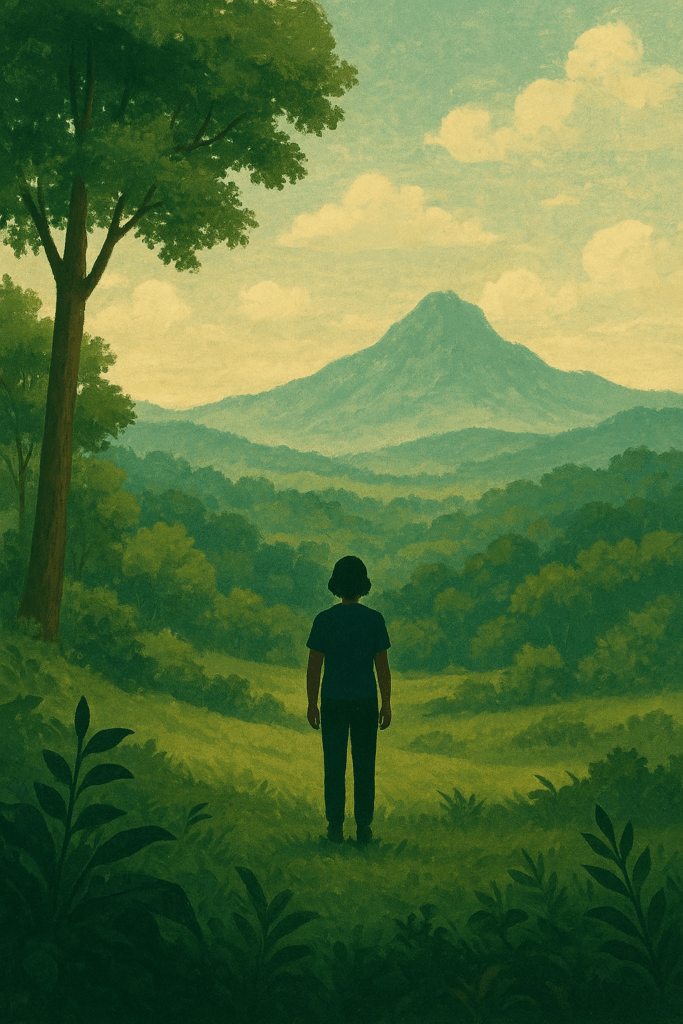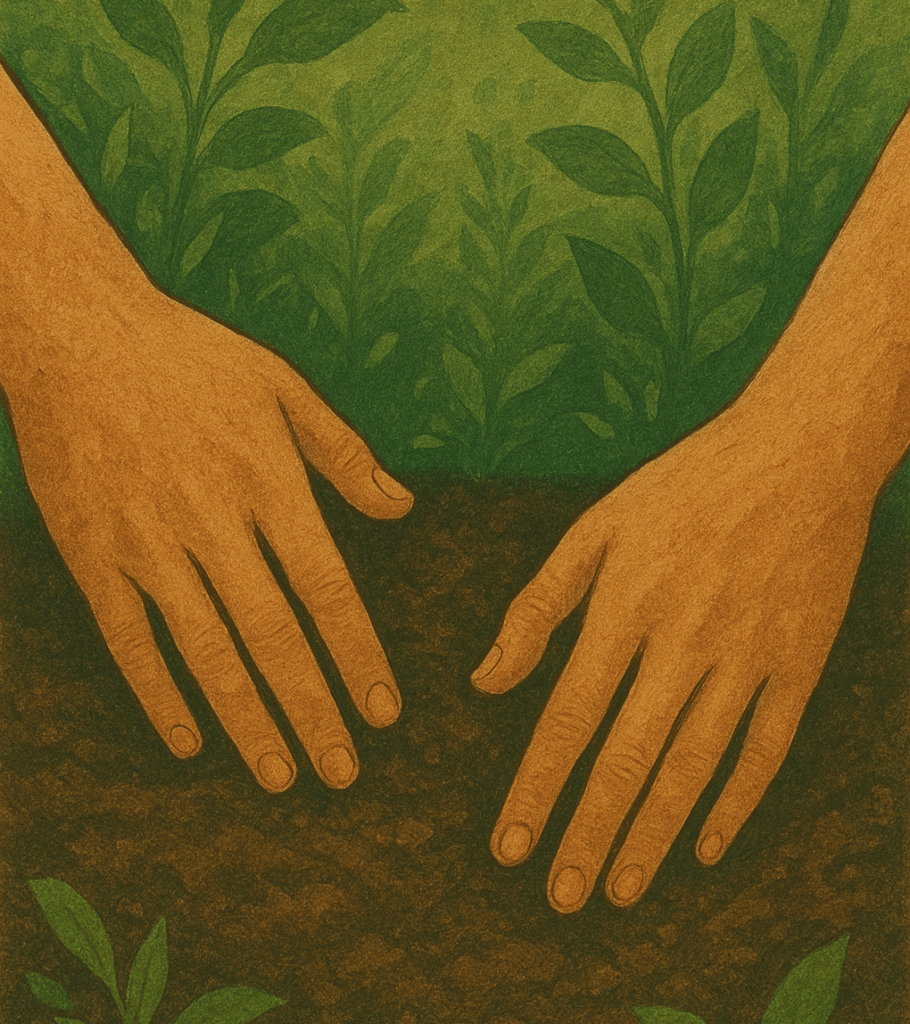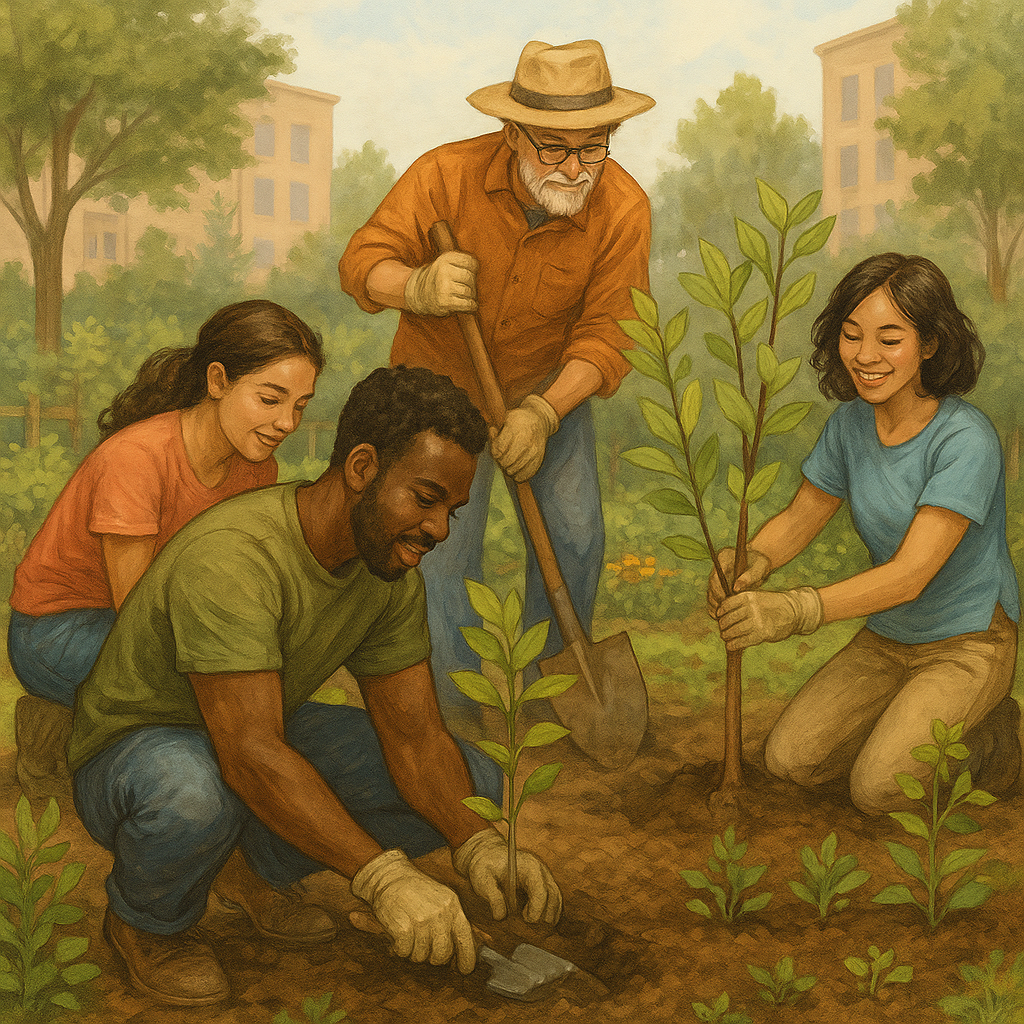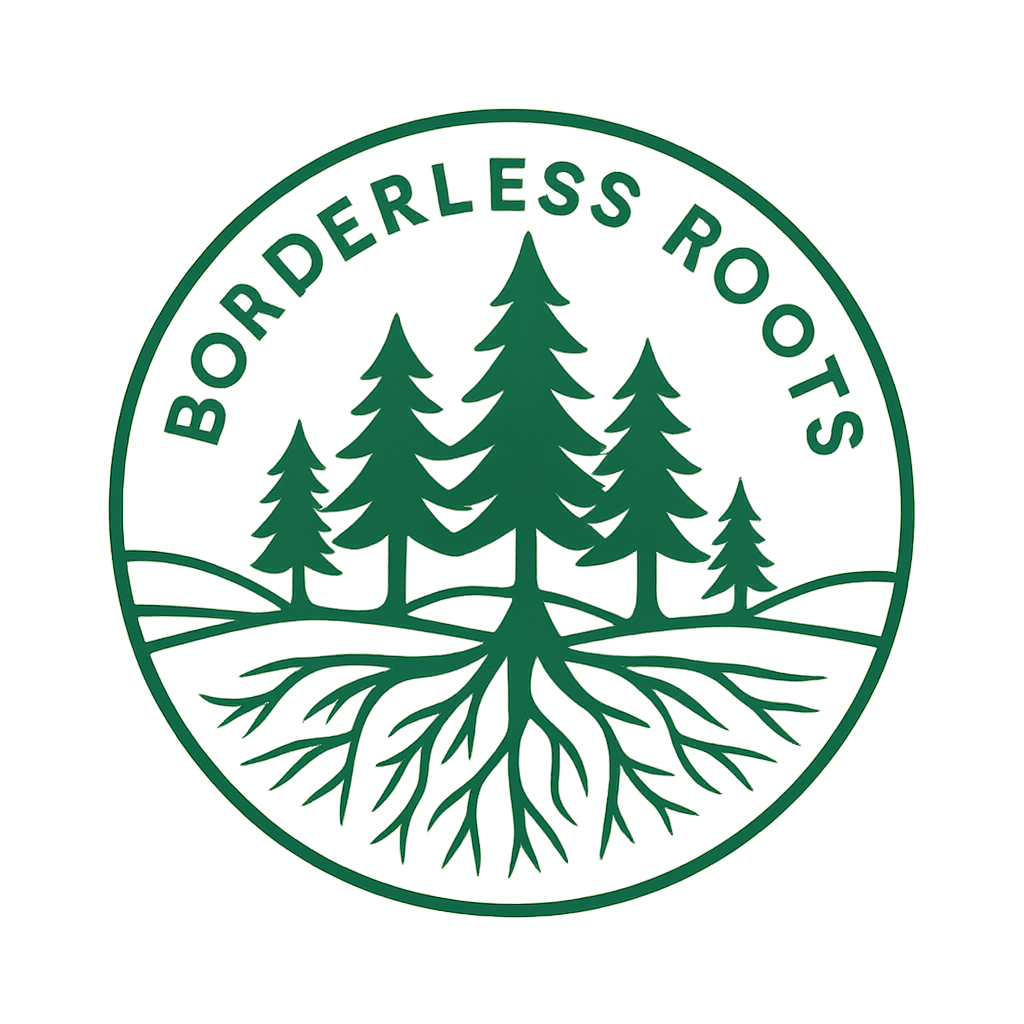Seeing the Earth as kin—not a commodity—blends Indigenous wisdom and modern science to inspire reciprocity, sustainability, and a new planetary ethic.
What if the ground beneath your feet wasn’t property—but family?

Imagine for a moment that the soil under your garden, the ocean’s tide, even the wind brushing your skin were not inert resources to be managed, but living relatives with whom you share history, responsibility, and care. It’s a radical shift in imagination—one that cuts against centuries of Western thought, where nature has been framed as something to use, to own, and to profit from.
This worldview—of Earth as an object—has driven extraordinary innovation but also deep imbalance: ecological degradation, climate crises, and a spiritual estrangement from the living systems that sustain us. What happens, then, when we turn that framework inside out? When we see the Earth not as an asset to be extracted, but as a beloved elder, a nurturing mother, a relative whose wellbeing is inseparable from our own?
The Rights of Mother Earth declaration offers a moral and legal foundation for this reimagining. Emerging from Indigenous philosophies and now echoing in global environmental ethics, it asserts that the planet itself holds inherent rights—to exist, to flourish, to renew. To view Earth as kin is not poetic idealism—it’s a relational ethic, one that replaces dominance with reciprocity and ownership with obligation.
By treating the Earth as a relative rather than a resource, we begin to restore a sense of respect and belonging that transcends human-centered thinking. It’s not just about sustainability—it’s about re-entering relationship with the living world that has always, patiently, called us home.
Indigenous Worldviews of Earth as Family
Across countless Indigenous traditions, the Earth is not a backdrop to human life — she is life. Known by many as Mother Earth, she is understood as a sentient being with spirit, agency, and wisdom. In this worldview, the soil breathes, the rivers speak, and the mountains remember. Humans are not separate from this living web but are woven into it — one strand among many, bound by relationships rather than rights.
In the framework outlined by Mother Earth Kinship: Centering Indigenous Worldviews, this perspective is not metaphorical; it is ethical. It defines relational accountability — the understanding that every action toward the land, water, or sky carries moral weight because it affects one’s relatives. This is the essence of kincentric ecology, a concept emphasising that all beings are kin and that humans are neither masters nor managers but caretakers with reciprocal duties. To take from the Earth, one must also give back — through gratitude, ceremony, or restoration.

Modern Indigenous voices continue to bring these teachings into contemporary life. As shared in Sacred Earth—An Indigenous Perspective, living in kinship is a daily practice: offering tobacco before harvesting, thanking the rain, or simply moving through the world with awareness that one walks upon a living body. These acts, small and sacred, root ecological ethics in love rather than law — a form of spirituality grounded in relationship.
This stands in stark contrast to dominant Western worldviews, where nature has long been framed as a resource to control and exploit. As Indigenous Worldviews vs. Western Worldviews notes, the Western paradigm often privileges extraction, ownership, and human superiority, whereas Indigenous cosmologies insist on interdependence and respect. One sees land as property; the other sees it as family.
To embrace the Earth as kin, then, is to recover a wisdom that has always been present — one that teaches that sustainability is not merely a policy goal, but a way of being in right relationship with the living world.
Science Meets Spirit — The Biological and Ethical Foundations of Kinship
The idea that all life on Earth is family isn’t only spiritual—it’s scientific. Modern biology reveals a tapestry of kinship that links humans to every living organism on the planet. We share ancestors with trees, fungi, whales, and sparrows. This is kinship, written in the body of the Earth itself.
As explored in Can We Think About Other Species as Relatives Rather than Resources?, science increasingly supports what Indigenous wisdom has known for millennia: the boundaries between “human” and “nature” are illusions. Ecology and genetics together show that our survival depends on cooperation, not competition; reciprocity, not dominance. The more science uncovers the interdependence of life systems, the clearer it becomes that ethical responsibility toward the Earth isn’t optional—it’s biological.
This synthesis of Indigenous philosophy and modern science is finding expression in the growing field of biocultural ethics, which argues that moral reasoning must include all living beings and their shared habitats. The Ecological Society of America’s publication on Earth stewardship extends this idea further, calling for institutions and policies that protect the relationships sustaining planetary life. This is science with soul—a merging of empirical knowledge and moral imagination that repositions humans not as the managers of Earth’s systems, but as participants in a shared family of life.
Living the Relationship — Practical Implications for Society
Seeing Earth as kin is not a metaphor to admire—it’s a relationship to live. When this worldview takes root, it reshapes culture, communities, economies, and governance alike.
Cultural: Kinship begins in story. Stories are vessels of belonging, teaching gratitude, humility, and relational responsibility. Through songs, ceremonies, and language, people remember that every being—stone, stream, bird—is part of an extended family. Such narratives counter the culture of consumption by nurturing reverence and reciprocity.
Social: On a community level, kinship ethics inspire collective stewardship. As outlined in Mother Earth Kinship, many Indigenous and local groups are reviving conservation practices grounded in relationship—restoring wetlands as “ancestral homes” of species, reforesting land as “healing acts,” and treating waste reduction as care for family, not compliance with regulation.
Economic: The shift from ownership to relationship also redefines value. The Ecologist’s article, “Nature Isn’t a Commodity”, challenges the idea that natural systems exist to be bought and sold. Instead, it promotes regenerative economics—models that return resources to the Earth, honour reciprocity, and prioritise collective well-being over profit. A kinship economy measures success not by extraction, but by the vitality it leaves behind.
Political: Finally, this worldview reaches into the realm of governance. The Rights of Mother Earth declaration has become a foundation for movements granting legal personhood to rivers, forests, and ecosystems around the world. These laws recognise that the Earth has intrinsic rights to exist, thrive, and regenerate—mirroring the responsibilities humans owe to their living relatives. It’s a political reawakening that aligns law with life.
In essence, to live as if Earth were family is to reimagine the foundations of our societies—from how we teach and trade to how we legislate and live. It’s a return to relationship, guided by ancient wisdom and renewed by modern understanding.
Returning to Relationship
To see the Earth as kin is to return to a truth that is both ancient and urgently new. It is ancient because Indigenous peoples have lived by this wisdom for millennia—seeing the soil, rivers, and sky as living relatives bound by reciprocity. It is radical because in a world shaped by extraction and profit, the act of loving the planet as family defies the very logic of ownership.

This kinship worldview asks something deeper than sustainability; it calls for relationship. It asks that we make choices—not only as consumers or citizens, but as relatives—who understand that care for the Earth is care for ourselves. It demands that governance recognise the rights of the living world, that economies serve the flourishing of all species, and that culture once again speak the language of gratitude, reverence, and repair.
As reflected in Seeing the World as Kin, this vision surpasses belief, culture, and discipline. It is a spiritual and moral awakening, one that redefines belonging: we are not stewards standing apart from creation, but siblings within it. To act with humility and love toward the Earth is not simply environmentalism—it is relationship restored.

So the question remains, as both challenge and invitation:
If Earth is family, how do we show up for her?
The answer begins in small gestures—planting, thanking, protecting—and ripples outward into the systems that shape our shared future. Because once we remember that the Earth is not a resource but a relative, every decision becomes a chance to live that truth.
Note: Most of images in this article were created using AI tools to help illustrate key ideas. We use these visuals to make the content more engaging and accessible while keeping the message clear and accurate.

Leave a Reply